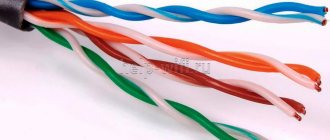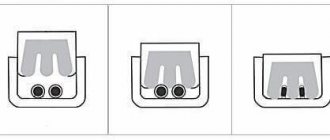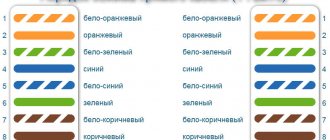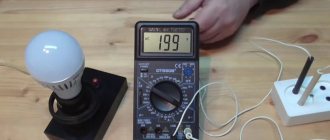Author of the article
Yuri Sanaev
System Administrator. Sales manager of computers and wi-fi equipment. Work experience – 10 years. Knows everything and even more about hardware and software.
To bring the Internet into the house, lay a local network, or connect a computer to a router, a special wire is required. To choose a good Internet cable, you need to know what types there are, what tasks they are intended to solve, and what characteristics they have.
Main types
There are three types of Internet cable: coaxial, fiber optic and twisted pair.
twisted pair
This network cable is a suitable solution for local area networks. It consists of two or four pairs of wires twisted together. Each two wires, connected in pairs, are used only to send or receive a signal.
The principle of twisted pair is to connect two nodes and use separated media to transmit data in different directions.
Twisted pair connects equipment into one network at a distance of up to 100 meters. Due to its low price and ease of use, it is increasingly being chosen for the formation of local area networks (LAN) and Internet access indoors.
Optical fiber
Optical fiber is the fastest way to transmit information today.
Among its advantages:
- high throughput;
- long service life;
- quick detection of unauthorized connections, which makes the network more secure;
- high noise reduction, good interference protection;
- fast data transfer.
Fiber optic network wires use a method of transmitting light rays using total internal reflection. An important advantage of such a cable for connecting to the Internet is that there are no restrictions on the length of the line. That is why it can connect significantly distant objects.
Optical fiber itself is inexpensive, but the equipment for it has a very high price.
Coaxial
This type is used in security alarms, video surveillance and television. The principle of its operation is the broadcast of radio frequency electrical signals, and the strength of the signal is closely related to the length of the line and the distance to which it will be sent.
Coaxial cable can be thin or thick.
The diameter of the first (category RG-58/U) is up to 0.5 cm. It is distinguished by its high flexibility, but the signal transmitted through it quickly fades. It can be used to send data over short distances, the maximum speed is up to 10 Mbit/s. Characteristic impedance - the main characteristic that affects the quality of the cable and the transmitted signal - 50 Ohms.
The diameter of the thick cable is 1 cm. It has increased rigidity and is mounted using expensive equipment. These are categories RG-11 and RG-8. The characteristic impedance of the first is 75 Ohms, the second is 50 Ohms.
Today, coaxial cable products are increasingly being replaced by twisted pair cables. The latter is cheaper, and it makes it easier and faster to lay networks.
How to install an Internet cable
Installation, as well as choice, plays a big role in the further operation of the laid network. Even expensive high-quality twisted pair cable, if installed incorrectly, can lose its technical characteristics or stop transmitting a signal at a critical moment.
To prevent this from happening, it is important to choose the optimal installation method and take the installation work responsibly.
Installation in apartments, offices and outdoors
Cable channels are used for installation in premises. It is easy to install a local network or the Internet with them, since you can see where the line is laid. To maintain or expand the network, simply open the cover. In addition, the plastic case protects from accidental mechanical damage, and fire-resistant plastic even from fire.
For installation in parallel with the power supply, a partition is placed in the cable channel, separating the power lines from the network lines. This is necessary in order to partially dampen the electromagnetic influence and prevent interference in the network.
Twisted pair cable can also be laid openly along the wall or through the air. For air-mounted laying along supports, a special design reinforced with a cable is used. The configuration of the cable placement may vary, however, its very presence is important. Without it, sagging or breakage may occur. Constant vibrations from the wind will lead to broken veins and loss of contact.
It is laid underground through pipes that protect against rodents, soil pressure and shovels. risky to do this without pipes , as damage may occur due to soil subsidence, and the service life will be shortened due to moisture.
Network extension and branching without loss of quality
It is important to maintain the length, since with distance the losses increase and the transmitted signal deteriorates. All manufacturers have 305 m coils. This is the size that is considered the standard.
In fact, twisted pair transmits a signal over a long distance, but the manufacturer cannot guarantee the basic characteristics, namely a frequency of 125 MHz and a speed of 100 Mbit/s for cat.5e. To protect the user from the temptation to increase the distance (for the purpose of “saving”), the size of the bay does not exceed the standard 305 m.
To increase the length and branching of the network, switches are used. They perform the function of a tee extender, when the signal entering one port is branched out to the rest and amplified. So, using a switch with an 8+1 port configuration, you can connect the Internet to 8 PCs.
Video surveillance is also connected through switches. POE cameras require special POE switches that transmit electricity in addition to the video signal over twisted pair cable, thereby providing power to the cameras. To do this, it is important to crimp according to the appropriate standard.
How to properly crimp a twisted pair cable
In everyday life, it is better to connect a computer or router with a patch cord, as it is more reliable and durable. But, sometimes this is not possible due to the large distance to the switch, so crimping of the twisted pair is required.
To do this, you need RJ-45 connectors and crimping pliers. First you need to remove 25-30mm of external insulation at the end and arrange the wires in the optimal order.
Next, you need to carefully cut the veins to equalize the length, insert them all the way into the connector with the contacts facing up and crimp.
The order of the colors depends on the type of connection. This can be either a direct or cross circuit. To connect a router or PC to the Internet, a direct scheme according to the EIA/TIA-568B standard is used:
- white-orange;
- orange;
- white-green;
- blue;
- white-blue;
- green;
- white-brown;
- brown.
There is also the EIA/TIA-568A standard. In fact, it differs only in the color of the conductors used for power supply. Due to the fact that some POE equipment does not work with EIA/TIA-568A, the generally accepted standard is EIA/TIA-568B.
Cross scheme or Crossover is used in two cases:
- For Fast Ethernet with data transfer rate of 100 Mbit/s;
- For Gigabit Ethernet with 1 Gbit/s traffic.
Sometimes crimping may be necessary to connect the damaged area.
Comparison of optical fiber and twisted pair
To determine which wire for the Internet is better to purchase - optical fiber or twisted pair, you need to decide under what conditions it will be used.
For a regular connection of a computer to a network, twisted pair cables work well. It is inexpensive, easy to install, and the transmission speed is sufficient for home and office use. This computer cable for the Internet bends well and can be stretched in the most inconvenient places. If by chance it gets damaged, it is easy to replace it, because the price is very low.
Fiber optics for home and office are expensive due to the equipment; using it as a wire for a local network is unjustified. The main advantage - the significant speed of information transfer - does not justify the costs, since several computers are not capable of creating the kind of traffic for which it is designed. Optical fiber is used to carry the Internet to populated areas or multi-story buildings. It is not afraid of line interference and long distances, so it is well suited for such tasks.
Thus, a fiber optic cable is usually suitable for a multi-story or private house. And inside the building there is already wiring going on using twisted pair cables.
Copper or partially copper-plated cable
Applications for controlling Wi-Fi networks and monitoring traffic on Androdi
The type of suitable conductor depends on the size of the future online network. The correct choice depends on the distance between bays and locks and the length between nodes. If the network is not stretched, the difference between copper-plated and copper wire will be insignificant. However, if you need to provide a local network over maximum distances, it is advisable to choose only copper devices.
Important. Otherwise, when transmitting signals from the output of one device to the input of another, due to the higher resistance of aluminum, the current strength will be reduced too much. As a result, the computer in the apartment will not be able to notice the device on the LAN network.
Therefore, you should only use copper. They are characterized by low resistance and transmit signals over long distances without problems. There will be no installation problems.
Network cable device
Different types of Internet cables have different structures. The simplest design is coaxial. The most advanced design of fiber optic wire.
Structure of a coaxial cable
Coaxial wire has a central core. A thick insulating layer is applied around it, with aluminum or copper braiding on top. General insulation is placed over the entire structure.
Twisted pair device
The optimal cable for the Internet is a twisted pair or Ethernet cable (as it is often called because of the plug of the same name at the end and the connector in the technology where the wire is connected). It is this that allows you to set up a local network between several devices, connect a printer to a computer, and connect the Internet from the supplier to the modem or router.
Such a wire is formed from two or four pairs of copper conductors (four-core and eight-core).
Inside each conductor there is one copper core with a diameter of 0.4-0.6 mm or many small wires. The first one is easier to crimp and is used to connect Internet sockets. The second is more flexible and is designed to connect PCs and other equipment.
Features of the optical cable structure
While users are often familiar with the structure of a twisted pair or coaxial wire, few know what a fiber optic network cable looks like from the inside.
The optical fiber inside consists of many tiny wires separated by a special coating. Each such wire has a silicon core through which these optical rays pass and carry. In addition to the core, it has an optical cladding, a buffer coating and protection.
The shell surrounding the core is made of glass. Light, reflected from it, is distributed throughout the core, but does not leave the wire.
What types of veins are there?
What are the differences between 3G and 4G networks: features, advantages and disadvantages
There are two main types of cores: copper-plated and all-copper.
Copper-plated
This type of wire consists of a composite material that has reduced conductivity. The core is made of metal with reduced conductivity, and the outer covering is made of copper.
Number of cores
Twisted pair for the Internet can include 4 or 8 wires, depending on the purpose. The wire is selected based on the requirements for the network and its functional purpose.
What criteria should you use to choose a cable?
Of all types of network cables for carrying the Internet in an apartment, office or home, it is better to choose twisted pair cable of category 5E. When purchasing, you need to pay attention to a number of criteria, otherwise a bad wire will cause a weak signal and constant loss of communication.
Category
There are 7 categories of wire in total.
- Categories 1, 2, 4 are almost never used. Type 3 is selected for telephone lines.
- Categories 5 and 5e have almost no differences; the fifth is actually not on sale. Since 2010, after the advent of 5E, manufacturers, practically without changing the Internet cable, began to apply this particular category to the shell. It is she who is the most popular today.
- In category 5E there is a 2-pair (4-core) or 4-pair (8-core) cable with data transmission up to 100 and 1000 Mbit/s. Also, a four-pair cable is laid for networks with a speed of 1 Gbit/s. The maximum allowable distance for it is 100 meters.
- Category 6 consists of four pairs and is intended for networks with speeds up to 10 Gbit/s. For speeds up to 1 Gbit/s, the maximum wire length is 100 meters, for speeds up to 10 Gbit/s – 55 meters.
- Categories 6a, 7 and 7a are shielded cables for networks with speeds up to 10 Gbit/s and highways up to 100 meters. The use of such a screen means increased requirements for equipment and installation (good grounding is required), so most often the use of fiber optics is preferred over this wire.
| Category | Frequency, MHz | Signal transmission rate, Mbit/s |
| 5 | 1-100 | 10, 100 |
| 5e | 1-100 | 10, 100, 1 Gbit/s (eight-core cable) |
| 6 | 1-250 | 10, 100, 1 Gbit/s |
| 6a | 1-500 | 10, 100, 1 Gbit/s, 10 Gbit/s |
| 7 | 1-600 | 10, 100, 1 Gbit/s, 10 Gbit/s |
| 7a | 1-1000 | 10, 100, 1 Gbit/s, 10 Gbit/s |
It must be remembered that the category only reports on the quality of the Internet cable.
It is mistakenly believed that changing the wire will change the frequency at which it operates. This is not true. The cable operates at the frequency of the network equipment. Replacing a high-quality fifth category with a sixth will not increase the signal speed and communication status.
Core type
Depending on the type of core, a WLAN wire can be single-core or multi-core. In the first case, there is one thick vein inside. It bends poorly and is used for installing Internet sockets. Stranded wire has many thin strands. This Internet cord bends easily, is convenient to install and is used to connect different devices indoors. For example, you can connect a cable of this type to the LAN connector of your router, run it to the PC and insert it into the network card.
According to the material of manufacture, the cores can be copper or copper-plated. The first type is more reliable, suitable for networks up to 50 meters long. The second type is cheaper, its core is an inexpensive vein. It has weak conductivity, so it is coated with copper on top. The current passes through the copper part, which means that the conductivity is practically not reduced.
When choosing, you need to take into account that the wire can be of two types - CCS and CCA. The first has a steel core, the second has an aluminum core. Steel is more difficult to install and is brittle. Aluminum is almost no different from copper, but is afraid of long distances.
Shielding
The shield protects the Ethernet cable from external interference and dampens radiation from the pairs themselves. It can be general for all couples or personal for each couple.
The following varieties are known:
| Designation according to ISO/IEC 11801 | General screen | Screen for individual couples |
| U/UTP | – | – |
| U/FTP | – | Foil |
| F/UTP | Foil | – |
| STP | Braid | – |
| SF/UTP | Braid, foil | – |
| F/FTP | Foil | Foil |
| S/FTP | Braid | Foil |
| SF/FTP | Braid, foil | Foil |
A cable connected to a router or used to lay a network around an apartment, usually of the UTP type. Shielded types are suitable for placing the wire in the same corrugation or groove with an electrical cable, when laying the line in close proximity to electrical wiring, as well as when installing outdoors.
Section
Another standard to pay attention to is AWG or wire gauge. The lower this value, the thicker and better quality the cable. UTP 5e twisted pair cables typically use AWG24. In categories 6 and 7 - AWG 23 and 22.
Methods for determining cable quality
To decide which cable you need for the Internet, you first need to look at the brand. It is advisable to choose options from American or Swiss companies: Mollex and Reichlea, respectively.
The next method is to inspect the core material (there is no need to make a cut, just ask for a sample in the store). The highest quality option, as mentioned above, is made of copper. You can also look for bimetallic conductors on sale, which have lower performance, but they are still quite acceptable.
The third thing you should pay attention to is the thickness of the cores. If the manufacturer produces a high-quality option, then the core should have a diameter of approximately 0.51 mm or even higher. If the wire is less thick, then most likely it was produced at an unbranded factory.
And the last thing is the presence of a certificate (not what the Internet wire is called, but a certificate).
For reference! Every reputable manufacturer carries out certification, which indicates the quality of the product produced.
Marking
Labeling an internet cable on it is a good way to understand what the wire is.
Marking example: NetLink PVC CAT5E UTP 4Pair 24 AWG.
Explanation:
- NetLink - manufacturer;
- PVC – PVC braid;
- Cat5E – category 5E;
- UTP – without shielding;
- 4Pair – 4 pairs;
- 24 AWG – section type.
Another example: Cabeus FTP-4P-Cat.5e-SOLID-OUT
Explanation:
- Cabeus – manufacturer;
- FTP – foil protection;
- 4P – 4 pairs;
- 5e – category 5e;
- Solid – one core;
- OUT – for outdoor installation.
Thus, knowing the characteristics of an Internet cable, you can understand from the markings on its outer shell what it is and whether it is suitable for the user’s tasks.
Fiber connection
Most well-known providers have already upgraded their own lines and use fiber optics and related equipment to connect subscribers. This is more convenient for a number of reasons:
- good throughput;
- large length of highways without deteriorating signal quality;
- saved space in OLT cabinets.
Some providers offer the introduction of fiber optics into the premises, which provides a stable, high-quality signal.
But even when introducing optical fiber into an apartment, it is better to make the wiring inside from twisted pair. It is cheaper and more convenient to install. Fiber optic wire is fragile and cannot be kinked. If it is damaged, the signal will disappear.
For these reasons, a special optical fiber is introduced into an apartment or house and connected to a converter, and from the latter a twisted pair cable is distributed throughout the room.
Twisted pair cables are used to conduct a network in an apartment or office. Fiber optics are expensive and not a suitable solution for such applications. It is usually used when connecting apartment buildings or private houses. You should select a cable for indoor wiring according to the user’s needs, having previously become familiar with the selection criteria and studying the markings on the wires when purchasing.
A little about connectors
As strange as it may sound, there are different types of connectors. And not all are suitable for crimping a standard Internet cable.
By the way, there are corresponding connectors for protected (shielded) cables.
Main types of connectors
In order to understand which connector is required to crimp a particular cable, you need to consider the main types of these components.
This is the only way to choose the one that is suitable in a given situation.
Fig. 10. Regular and shielded connectors
- RJ 11 4 P 4 C . This is the simplest type of connector. It is used in the creation of telephone cable. There are only three contacts on it. Therefore, the crimping scheme is quite primitive. There are only three strands of telephone wire.
- RJ 12 4 P 4 C . A type of telephone connector. It differs from the previous type solely in the number of contacts. There are four of them here. Otherwise everything is the same. Used quite often.
- RJ 45 UTP 5 E. _ Connector for crimping classic twisted pair (UTP). It has 8 contacts and is equipped with a special latch for fixing the cable. Most often used to connect equipment at home.
- RJ 45 FTP 5 E. _ Used exclusively in conjunction with shielded cables. It is distinguished by the presence of a metal casing that protects the data flow from various magnetic radiation.
It is very important to select the appropriate connector for a specific cable type.
If you neglect this rule, then at best you simply will not be able to crimp the cable.
At worst, such a cable will damage your equipment.











